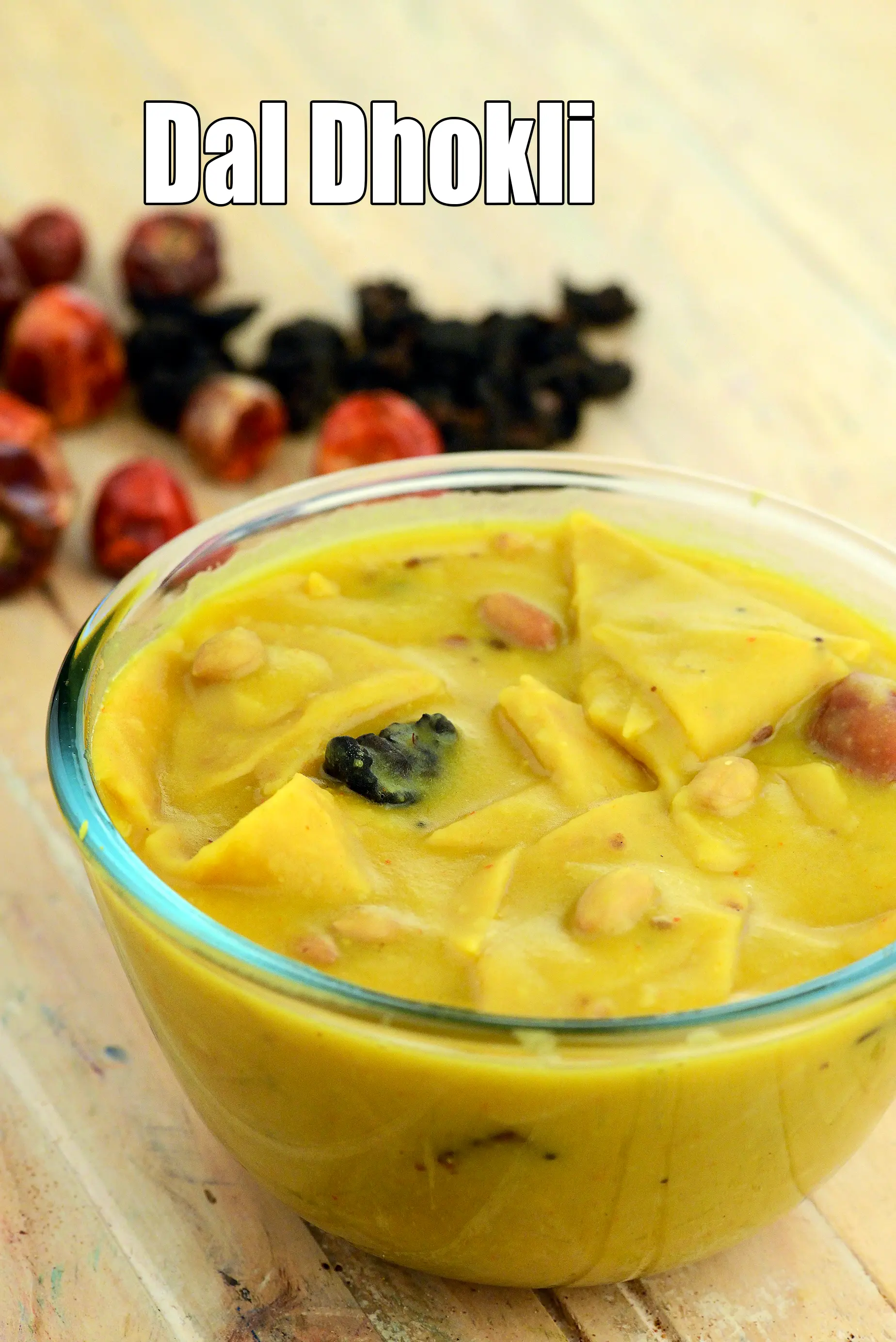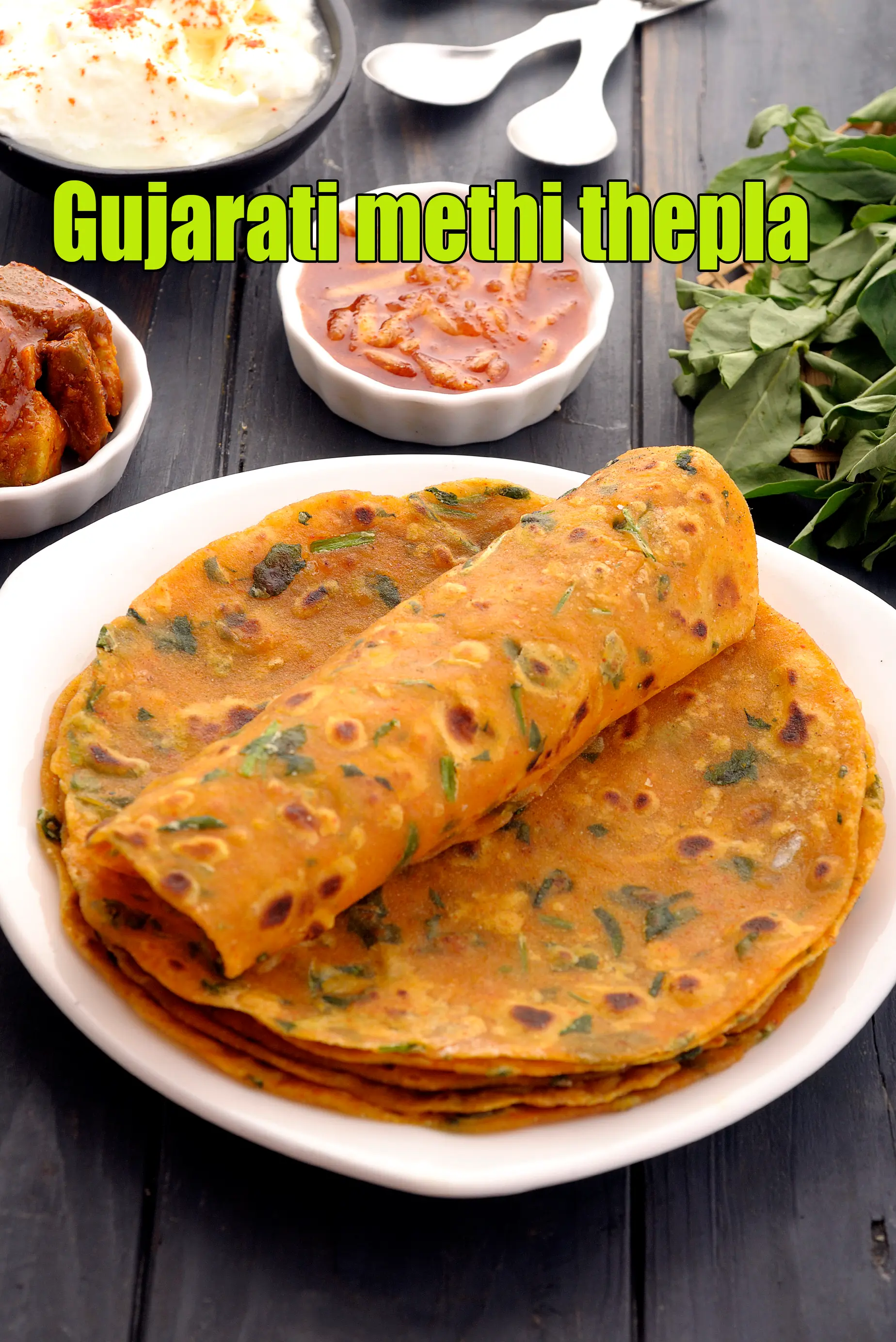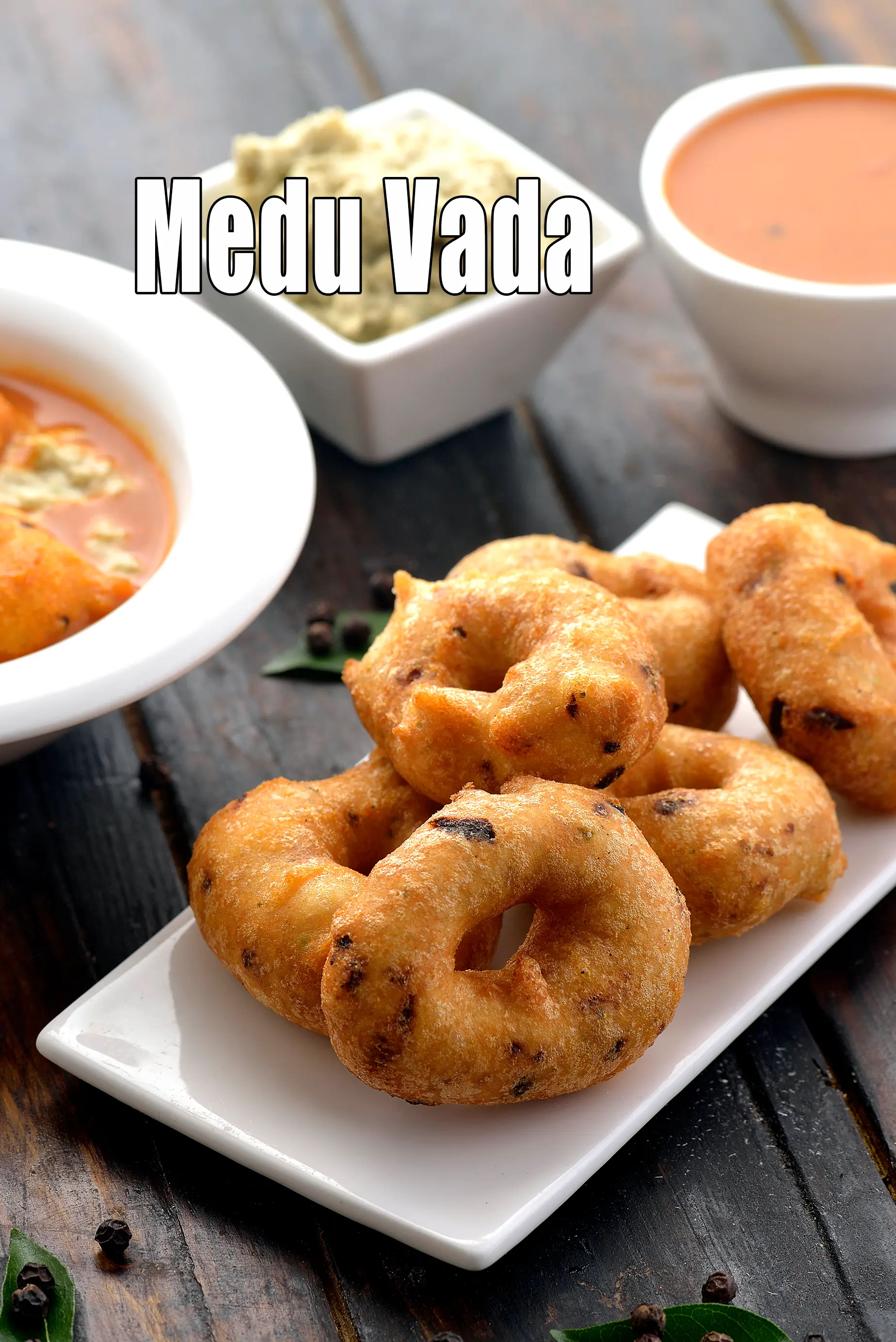rajma
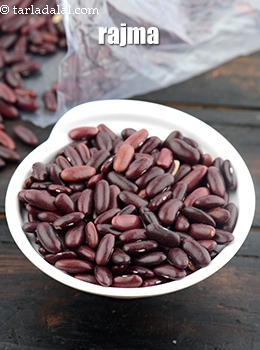
What is Rajma, kidney beans?
Just as its name suggests, the kidney bean is shaped like a kidney with a reddish brown colour and a thick skin. It has a strong flavour with a slightly sweet aftertaste, a nutty aroma and a chewy texture. The kidney bean is used extensively in Mexican cooking, and also in many Indian dishes. It is very popular in Punjabi cuisine.
Also Known as
Kidney beans, red kidney beans
Red rajma
Dark red kidney beans hold their shape really well during cooking and readily absorb flavours, making them a favourite addition to simmered dishes. Small and big sized beans are available, and you can choose what suits your recipe.
Black rajma
Black kidney beans and others such as pinto beans, navy beans, etc., are often referred to as ‘common beans’ in many countries. Black rajma is also available small and big, so choose what fits your recipe.
How to Select Rajma
• Kidney beans are readily available in dry and canned form in grocery stores.
• Choose even-shaped rajma that is clean and uncontaminated by debris.
Culinary Uses of Rajma
Primary Uses of Rajma in Indian Cooking:
Rajma Masala (Kidney Bean Curry): The most iconic dish featuring rajma is Rajma Masala, a hearty curry where kidney beans are simmered in a spiced gravy made from onions, tomatoes, ginger, garlic, and a blend of aromatic spices. This dish is traditionally enjoyed with steamed basmati rice, a combination fondly referred to as "Rajma Chawal."
- Dal Makhani: In this creamy lentil dish, rajma is often combined with whole black gram lentils (urad dal). The beans and lentils are slow-cooked with butter (makhan) and cream, resulting in a rich and indulgent preparation that's a favorite in Punjabi cuisine.
Rajma sabzi
rajma recipe | Punjabi kidney bean curry | authentic Punjabi rajma | healthy rajma recipe

Rajma as a snack
rajma dhokla | kidney bean dhokla | healthy rajma dhokla
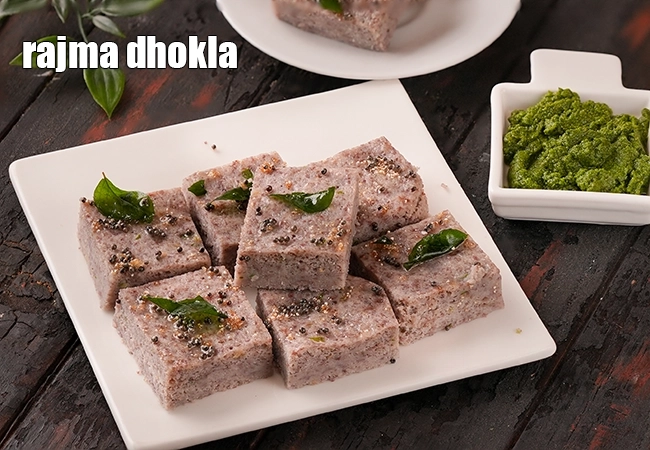
How to Store Rajma
• Always store dry kidney beans in a dry airtight container at room temperature. Do not store dry beans in the refrigerator.
• Once cooked, beans can be kept in the refrigerator in a covered container for up to 5 days and in an airtight container in the freezer for up to six months.
• Always rinse and sort beans before cooking to remove stones and other debris.
Nutritional Information of Rajma, Red Kidney Beans
One cup of cooked Rajma is 150 grams.
RDA stands for Recommended Daily Allowance.
Nutritional Information for 1 cup Cooked Rajma, (Kidney beans, red kidney beans).
173 Calories
17.1 grams of Protein
30.3 grams of Carbs
0.7 grams of Fat
205 mg of Phosphorus : 34% of RDA (about 600 mg for adult)
92 mg of Magnesium (Mg) = 26.2%% of RDA (about 350 mg)
2.3 mg of Zinc = 19.1% of RDA (about 10 to 12 mg)
703 mg of Potassium (K) : 15% of RDA (about 4,700 mg)
130 mg of Calcium (Ca) = 13% of RDA (about 1000 mg)
2.5 mg of Iron (Fe) = 12.5% of RDA (about 20 mg for women)
2.4 grams of High Fiber = 8% of RDA (about 25 to 30 grams)
9 Health Benefits of Rajma, Red Kidney Beans
1.Rich in Magnesium : One cup of cooked kidney beans has 78% of your daily Magnesium requirements. Magnesium helps in formation of bones and teeth and metabolism of calcium and potassium. Magnesium helps carbohydrates and hence regulate blood sugar levels helping Diabetics.
2. Lowers Cholesterol : Rajma is a complex carb and rich in Fibre which helps in Lowering Cholesterol levels. Soluble fibre may reduce the absorption of cholesterol. Hence lowers total cholesterol and LDL cholesterol (the Bad cholesterol) therefore reducing the risk of heart disease. Soluble fibre creates the bile in the intestine to excreted in the stool. The body needs cholesterol to make bile salts and hence the liver produces more LDL. So more bile salts made in the liver will result in more LDL cholesterol (bad cholesterol) being pulled out of the blood stream. So eat more soluble fibre.
3. Good for Skin: Zinc helps in building immunity, is good for skin, great Antioxidant and involved in energy metabolism and hormone production including testosterone in males and female sex hormones involved in releasing of egg from the ovaries.
See here for 10 benefits of rajma.
Glycemic Index of Rajma, Red Kidney Beans
Rajma has a Glycemic Index of 29 which is low. Glycemic Index are for foods you eat, ranks carbohydrate-containing foods by how quickly they digest and raise your blood sugar or glucose levels. Foods rank from 0 to 50 are low GI, 51 to 69 are medium and 70 to 100 are high. Foods that are high in GI are not suitable for weight loss and diabetics. Foods like Rajma have a low GI and hence dont spike your glucose level as they are absorbed slowly. Great for weight loss.
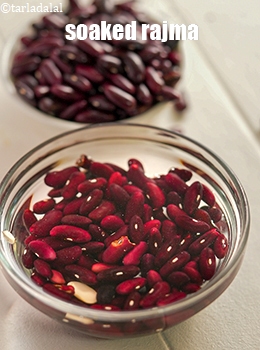
soaked rajma
To soak rajma beans, first wash them thoroughly, check for any stones and then soak in warm water. It is better to change the water from time to time while you're soaking or cooking the beans. Pouring off the water helps gets rid of the indigestible complex sugars that create gas in your intestine. It also helps to cook the beans thoroughly, until they can be easily mashed with a fork. Store soaked rajma in the refrigerator in an airtight container and use within 2 to 3 days. Longer storage could cause an undesirable odour. Soaking rajma does not cause any nutrient loss but makes it easier to digest. Soaking before use is recommended for those with gastric troubles.
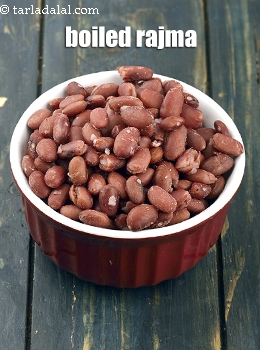
boiled rajma
Boiled rajma Wash and soak the rajma overnight. Then, drain and rinse the beans. Add soaked beans and water to a pressure cooker. The water should top the beans by about 2". Lock in the lid. Turn on heat. Cook for 15 minutes. Turn off the flame. Wait till the pressure has dropped, then open and drain the excess water. Use the cooked beans as required. Rajma may also be cooked in a pot. Place soaked rajma in a pot and cover completely with water. Add salt to taste. Cook it with a lid on. Once done, remove from heat and drain the water. The cooking time will vary depending on method, quantity, quality and age of beans. Boiled rajma can be eaten hot, warm or cold, as per one's choice, in various recipes.
sprouted rajma
After soaking rajma overnight, cover it with a muslin cloth or cheese cloth. Place this in a warm area to induce germination. Once germination begins, the sprouts will begin to grow. Ensure that you keep changing the water. Within 24 to 26 hours, small edible shoots begin to appear. Always wash gently and then use in the recipe. Ensure that you don't expose these sprouts to sunlight.
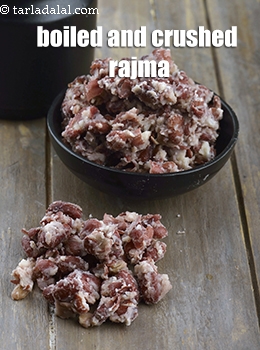
boiled and crushed rajma
Wash and soak the rajma overnight. Then, drain and rinse the beans. Add soaked beans and water to a pressure cooker. The water should top the beans by about 2". Lock in the lid. Turn on heat. Cook for 15 minutes. Turn off the flame. Wait till the pressure has dropped, then open and drain the excess water. Let it cook a little. Take a potato masher and mash the rajmato get the desired smoothness.

Related Recipes
Rajma Chawal, Punjabi Rajma Chawal
Mexican Tacos, Vegetarian Tacos Recipe
Rajma Curry, Punjabi Rajma Masala Recipe
Tacos, Mexican Tacos Recipe, Vegetarian Tacos
More recipes with this ingredient...
rajma (106 recipes), soaked rajma (3 recipes) , boiled rajma (53 recipes) , sprouted rajma (1 recipes) , boiled and crushed rajma (11 recipes)
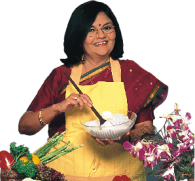
Related Glossary
Follow US
Recipe Categories
- Vitamin B12 Cobalamin Rich Recipes 33 recipes
- Low Calorie, Weight Loss Indian Recipes 421 recipes
- Low Cholesterol Indian Recipes 307 recipes
- Healthy Indian Breakfast 372 recipes
- Indian Diabetic recipes 558 recipes
- Indian Pregnancy recipes 461 recipes
- Zero Oil Indian Recipes 133 recipes
- Iron Rich Indian recipes 267 recipes
- Healthy Indian Acidity recipes 132 recipes
- Healthy Sabzis 108 recipes
- Indian Healthy Veg Snack 275 recipes
- Healthy Heart Recipes 415 recipes
- Healthy Veg Indian Soups 74 recipes
- Calcium Rich Indian Recipes 373 recipes
- High Blood Pressure Indian Recipes 100 recipes
- Healthy Indian Salads Recipes 137 recipes
- Low Carb Indian Diet, recipes 160 recipes
- Hypothyroidism Diet 59 recipes
- Arthritis Diet 68 recipes
- Vitamin K Diet 41 recipes
- High Protein Indian recipes 93 recipes
- Fatty Liver Diet 30 recipes
- PCOS 131 recipes
- Gluten Free Veg Indian 193 recipes
- High Fiber 328 recipes
- Indian Cancer Patients 275 recipes
- Jaundice Diet 45 recipes
- Sprouts 61 recipes
- Typhoid 43 recipes
- Irritable Bowel Syndrome (IBS) 20 recipes
- Kidney Stone Diet 9 recipes
- Home Remedies 213 recipes
- Senior Citizen 195 recipes
- Diet for Dialysis 10 recipes
- Healthy Indian Drinks and Juices 213 recipes
- Gout Indian Recipes 17 recipes
- Potassium Rich 80 recipes
- Vegan 194 recipes
- Forever Young Diet, Anti Aging Indian Diet 255 recipes
- Indian recipes to treat Vomiting 7 recipes
- High in Omega 3 Fatty Acids 31 recipes
- Zinc Rich Foods 55 recipes
- Vitamin B1 Rich Indian Foods, Recipes 101 recipes
- Malaria Diet 17 recipes
- Vitamin A Rich, Beta Carotene, Retinol 87 recipes
- Antioxidant Rich Indian 445 recipes
- Low Veg Glycemic Index 86 recipes
- Magnesium Rich 94 recipes
- Healthy Indian Dinner 85 recipes
- Lower Blood Pressure Salads 7 recipes
- Vitamin C Rich Indian recipes 118 recipes
- Healthy Indian Lunch Recipes 29 recipes
- Lactation 25 recipes
- Hyperthyroidism Diet 46 recipes
- Vitamin E Rich 50 recipes
- Vitamin B3, Niacin Rich 41 recipes
- Post Surgery Diet 42 recipes
- Lower Blood Pressure Desserts Sweets 14 recipes
- Selenium 27 recipes
- Phosphorus Rich Indian Recipes, Foods 74 recipes
- Copper 15 recipes
- Foods Rich in Vitamin B2 Riboflavin 22 recipes
- Vitamin B6 Diet 36 recipes
- Vitamin B9 Rich Folate 50 recipes
- B Vitamins 231 recipes
- Manganese Diet 32 recipes
- Marathoners, Endurance Athletes, Triathlete 225 recipes
- Thalassemia 18 recipes
- Detox Water, Fruit Infused Water 42 recipes
- Lactose Free Dairy Free 22 recipes
- Omega 6 Fatty Acids 32 recipes
- Phytonutrients 51 recipes
- Chronic Kidney Disease Indian recipes 12 recipes
- Selenium1 0 recipes
- Quick Snacks / Quick Starters 385 recipes
- Quick Breakfast Indian 132 recipes
- Quick Sabzis 117 recipes
- Quick Rotis / Parathas 46 recipes
- Quick Indian Sweets 139 recipes
- Quick Stir-Fries 51 recipes
- Quick Vegetarian Indian Soups 72 recipes
- Quick Chutneys 67 recipes
- Quick Vegetarian Rice, khichdi Recipes 56 recipes
- Indian snacks under 10 minutes 44 recipes
- Quick Indian Dips, Gravies & Sauces 103 recipes
- Quick Veg Indian Pizza 17 recipes
- Quick Veg Pasta 25 recipes
- Quick Pickles / Aachar 25 recipes
- Quick Dals / quick Kadhis 29 recipes
- Snacks under 5 minutes 33 recipes
- Quick Healthy Recipes 43 recipes
- Quick Pressure Cooker 46 recipes
- Quick Desserts 47 recipes
- Quick 3 Ingredients 63 recipes
- Quick Indian Desserts 18 recipes
- Quick 4 Ingredients 41 recipes
- Quick 5 Ingredients 41 recipes
- Kids Tiffin Box 318 recipes
- Recipes for Toddlers (1-3 Years) 31 recipes
- Sweet Recipes for Kids 453 recipes
- Recipes for Baby (10 to 12 Months) 14 recipes
- Quick Indian recipes for Kids 72 recipes
- Indian Breakfast Recipes for Kids 192 recipes
- Recipes for Weaning (8 to 9 months) 20 recipes
- Healthy Foods for Kids 195 recipes
- Snack Recipes for Kids 619 recipes
- Recipes Kids can make 36 recipes
- Kids After School 794 recipes
- Kids Jar Snacks 66 recipes
- Finger Foods for Babies, Toddlers and Kids 76 recipes
- Kids Weight Gain 43 recipes
- Kids Wraps and Rolls 23 recipes
- Kids Veg Pasta 27 recipes
- Kids Brain Boosting 68 recipes
- Protein rich food for kids 69 recipes
- Recipes for Weaning 13 recipes
- Kids Pizzas 30 recipes
- Babies, Toddler and Kids Iron Rich Foods 31 recipes
- High Fiber Foods for Kids 39 recipes
- Kids Noodles 37 recipes
- Kids High Energy Indian Foods 103 recipes
- Kids Calcium Rich Indian recipes 91 recipes
- Kids Recipes for Increasing Immunity 10 recipes
- Babies recipes, 6 to 18 months 31 recipes
- Kids Weight Loss 58 recipes
- Teething Recipes for Babies 10 recipes
- Cereals and Pulses for 8 to 9 months Baby 5 recipes
- Weaning foods at 7 months 8 recipes
- Indian Teen 315 recipes
- Starters / Snacks 2137 recipes
- Indian Breakfast Recipes 819 recipes
- Main Course Recipes 925 recipes
- Indian Salads 385 recipes
- Indian Desserts , Sweets 984 recipes
- Indian Soups 249 recipes
- Indian Beverages, Indian Drinks 483 recipes
- Indian Dinner 903 recipes
- Indian Dinner1 0 recipes
- Indian Lunch 830 recipes
- Side Dishes 449 recipes
- Indian Travel Food 433 recipes
- Indian Barbeque1 recipes 22 recipes
- Frozen Foods, Indian Freezer Recipes 67 recipes
- Whole Wheat Recipes 56 recipes
- Indian Comfort Foods 212 recipes
- Dinner Menus 56 recipes
- Easy Indian Veg 70 recipes
- Innovative Indian Recipes 27 recipes
- No Cook Indian 37 recipes
- Advanced Recipes 10 recipes
- Cakes with Eggs 13 recipes
- Microwave 230 recipes
- Oven 619 recipes
- Indian Steamer Recipes 102 recipes
- Kadai Veg 406 recipes
- Indian Barbeque Recipes 43 recipes
- Sizzler tray 15 recipes
- Mixer 566 recipes
- Pressure Cooker 315 recipes
- Tava 646 recipes
- Non-stick Pan 1393 recipes
- Appe Mould 17 recipes
- Pan 223 recipes
- Indian Freezer recipes, meals 56 recipes
- Deep Pan 148 recipes
- Non Stick Kadai Veg 203 recipes
- Refrigerator 176 recipes
- Waffle Indian recipes 6 recipes
- Handi 12 recipes
- Juicer and Hopper 64 recipes
- Grill 30 recipes
- Toaster 21 recipes
- Gas Toaster 7 recipes
- Steam 72 recipes
- No Cooking Veg Indian 335 recipes
- Vegetarian baked Indian recipes 380 recipes
- Boiled Indian recipes 129 recipes
- Deep Fry 259 recipes
- Indian Tawa 266 recipes
- Shallow Fry Indian 25 recipes
- Microwave1 173 recipes
- Saute 273 recipes
- Indian Pressure Cooker 171 recipes
- Stir-fry 100 recipes
- Roasting 0 recipes

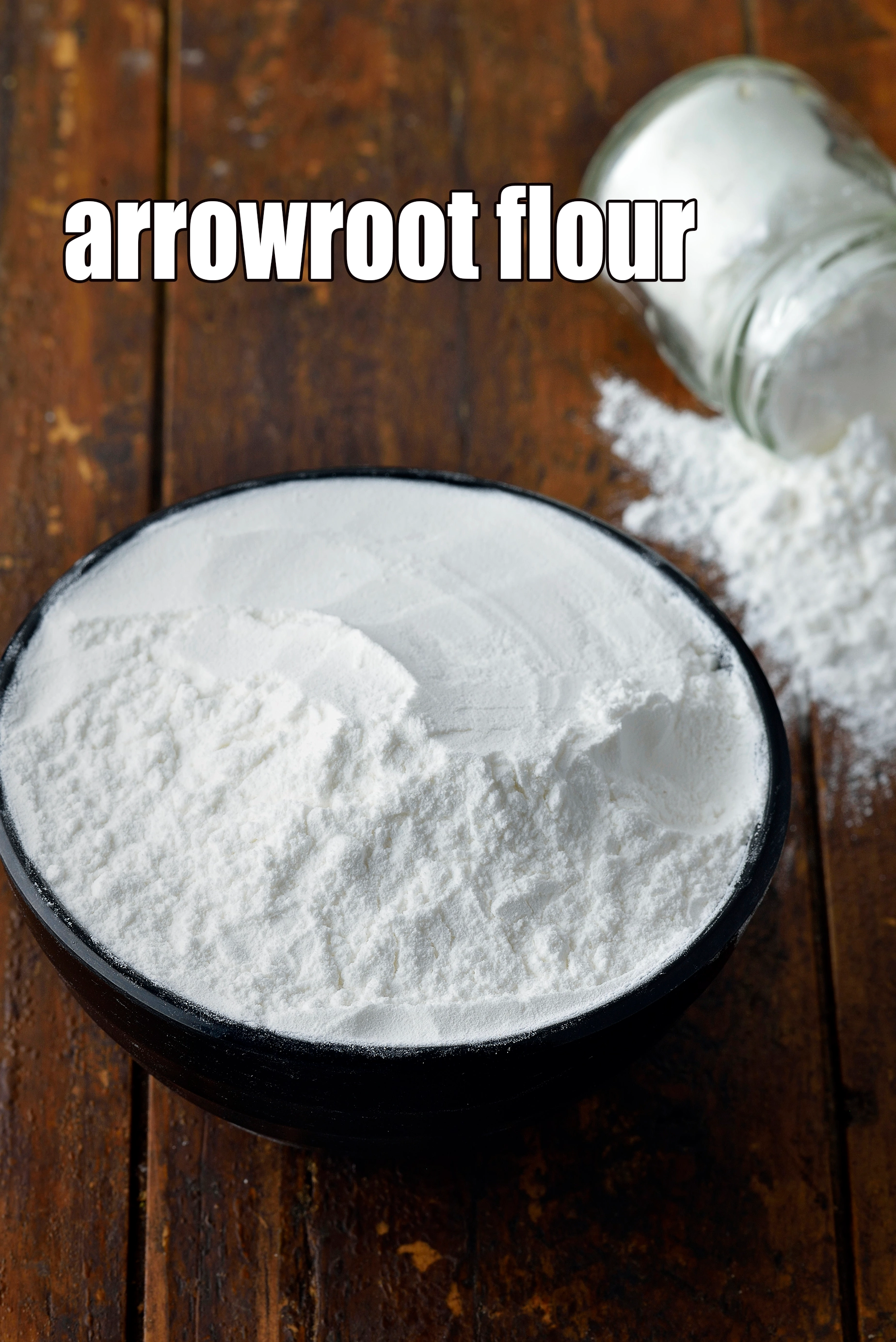
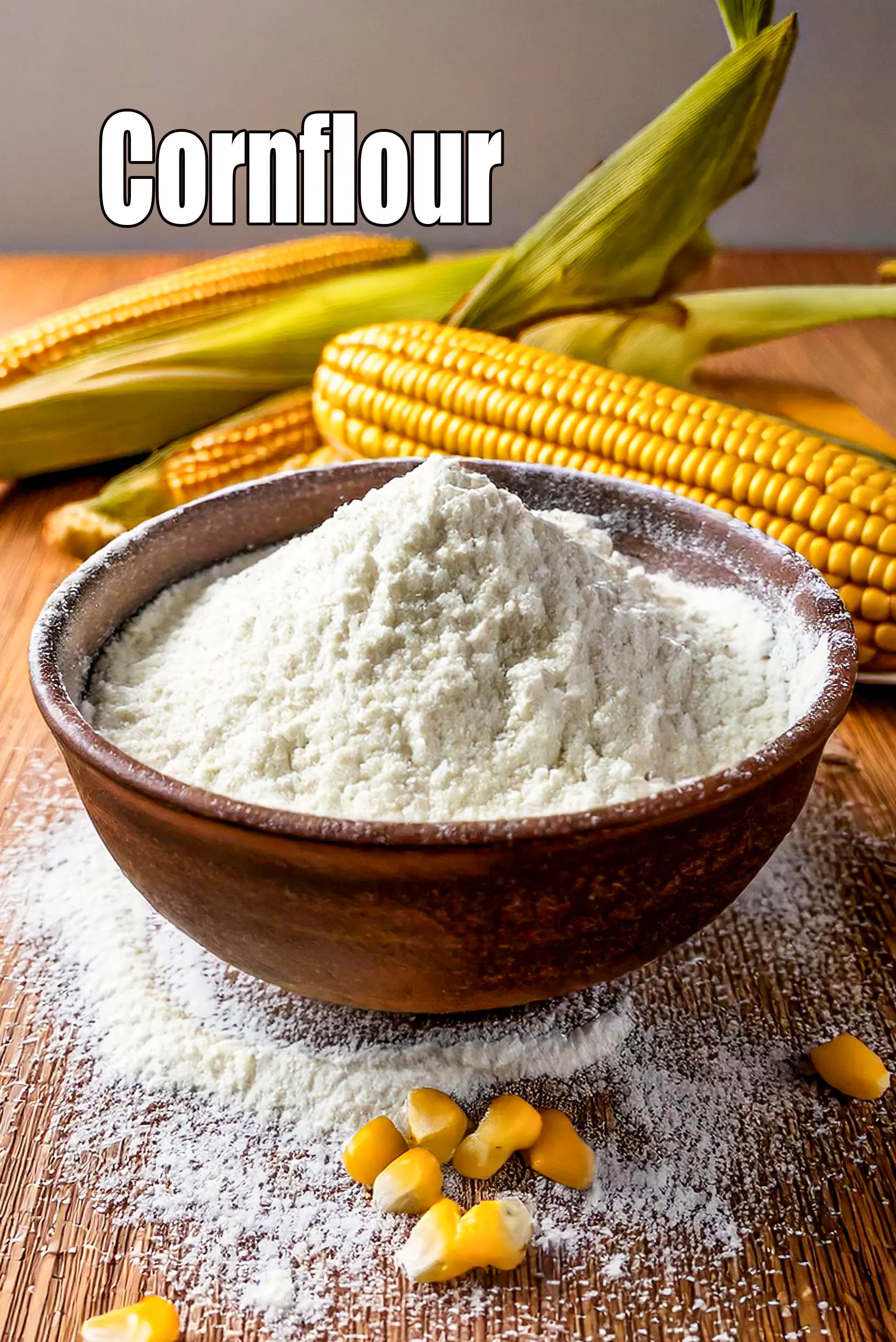
.webp)
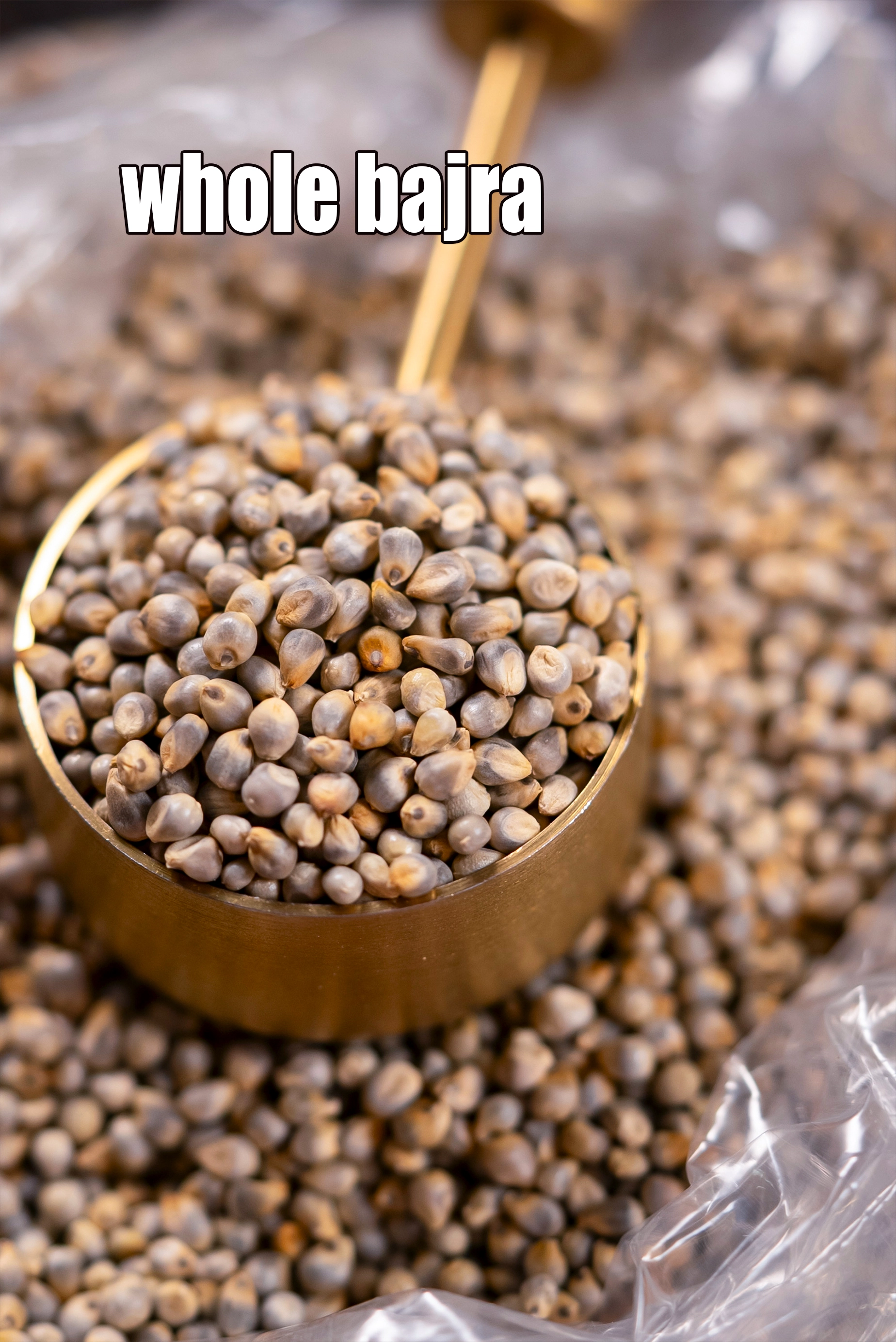
.webp)


